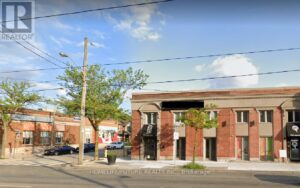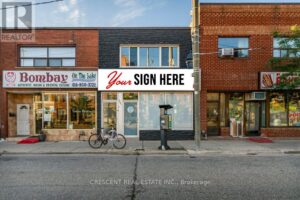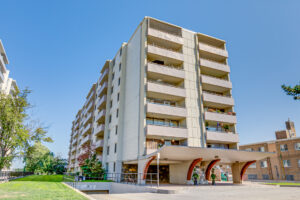A public meeting is being held in a City study that will increase the density and heights of buildings to 11 stories, upgrade and beautify sections of Lake Shore Blvd. W. corridor.
The Lake Shore Boulevard West Avenue Study community feedback drop-in meeting will be held on February 26 at Lakeshore Collegiate Institute, at 350 Kipling Avenue, from 6 p.m. to 8:30 p.m.
City officials said recommendations for the area have been developed through community input, technical research, industry feedback and city by-laws.
“The recommendations are to be resilient, forward thinking, and make for a thriving, safe and accessible avenue,” according to a City notice.

A public meeting to discuss potential changes to the Lake Shore Blvd. W. corridor takes place on February 26.
The study said the four kilometre corridor in New Toronto and Long Branch is ideal for intensification and mid-rise buildings from Dwight Avenue west to Brown’s Line, with gaps at Humber College.
The corridor contains mostly two or three-storey commercial buildings with angled or parallel on-street parking, with some newer townhouses and some six-to-eight storey residential buildings.
The study proposes mid-rise buildings up to 11 storeys high along Lake Shore Blvd. W., west of Kipling Avenue and up to eight-stories along Lake Shore Blvd. W., east to Dwight Avenue.
The City’s Planning Department Staff also plan to streamline the development application process for proposals to meet new performance standards.
The plan will improve the ‘sub-standard sidewalk widths, lack of street trees, angled, perpendicular or parallel street parking, lack of street furniture as benches, waste bins, bicycle posts and lock up rings.’
“This study seeks to evaluate opportunities to improve the public realm to better support, facilitate, and accommodate the expanding population of south Etobicoke and the local economy,” according to the study.
Staff said the proposal for the area supports public transit, will integrate green infrastructure, make it safer, more attractive and vibrant to support local businesses.
Feedback from the community called for more greenery or tree canopy for the Corridor. Other concerns includes the installation of bike lanes along the boulevard in addition to easy accessibility to the TTC. The study is not looking at the installation of bike lanes at this point.

